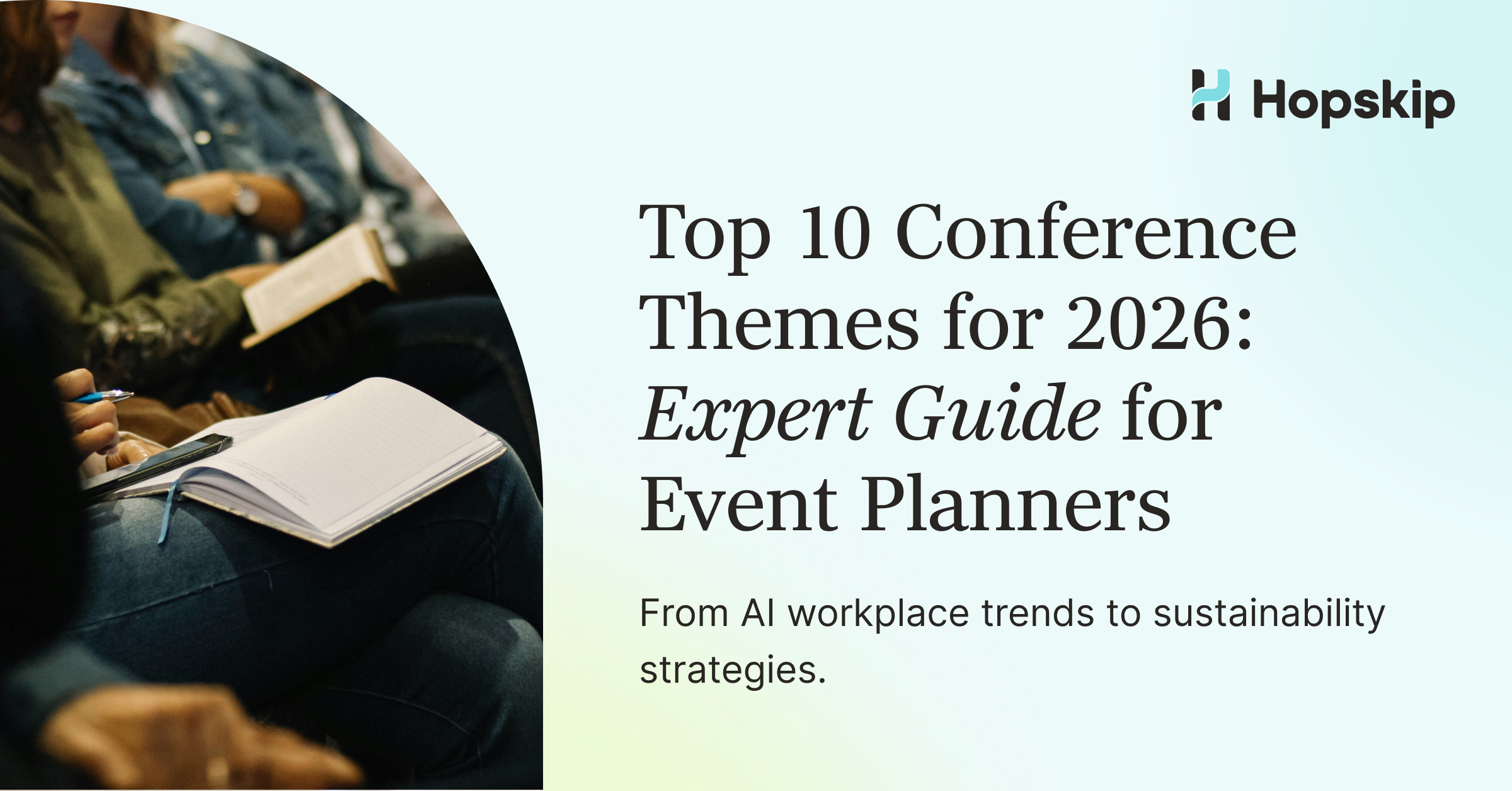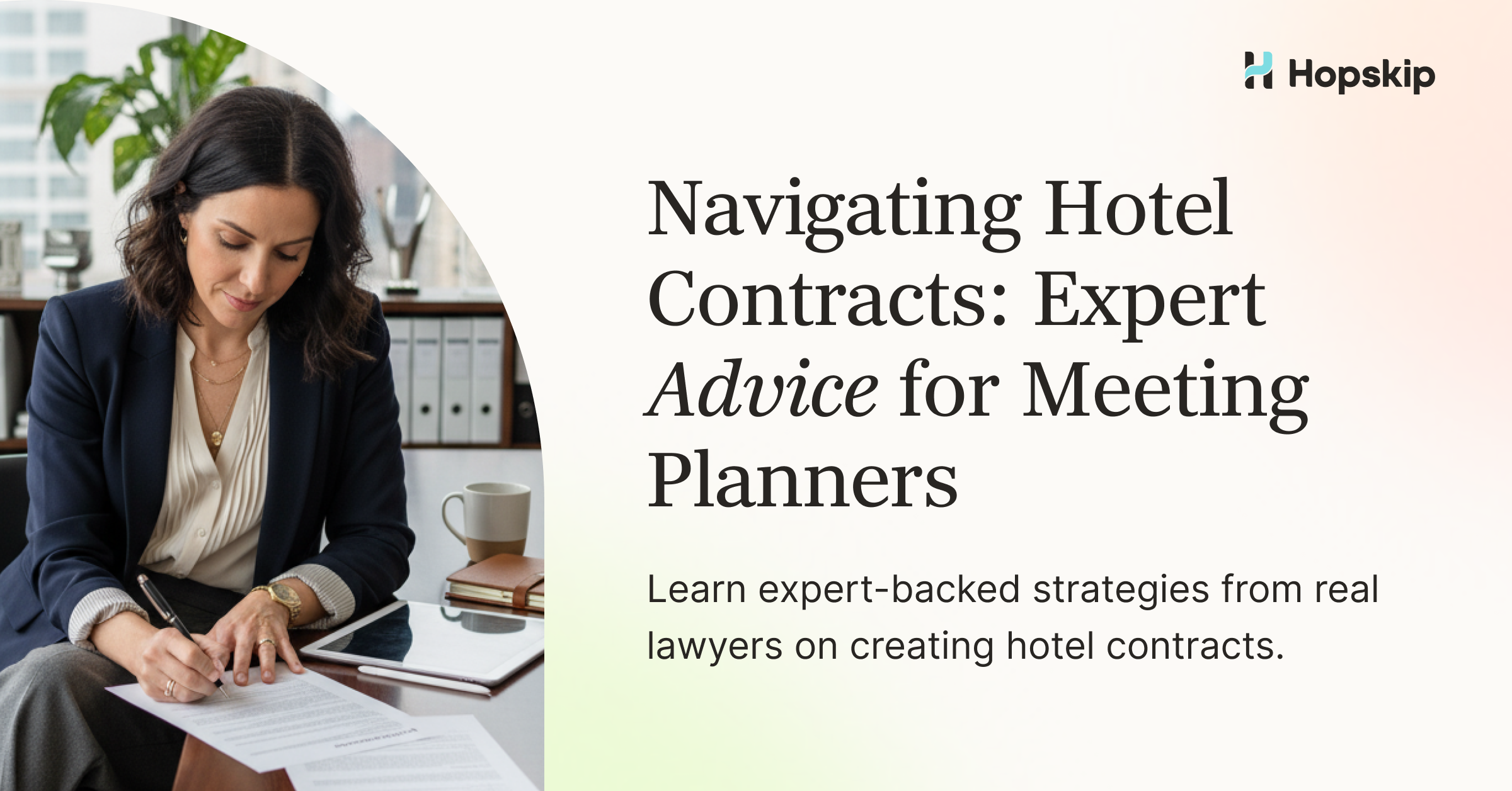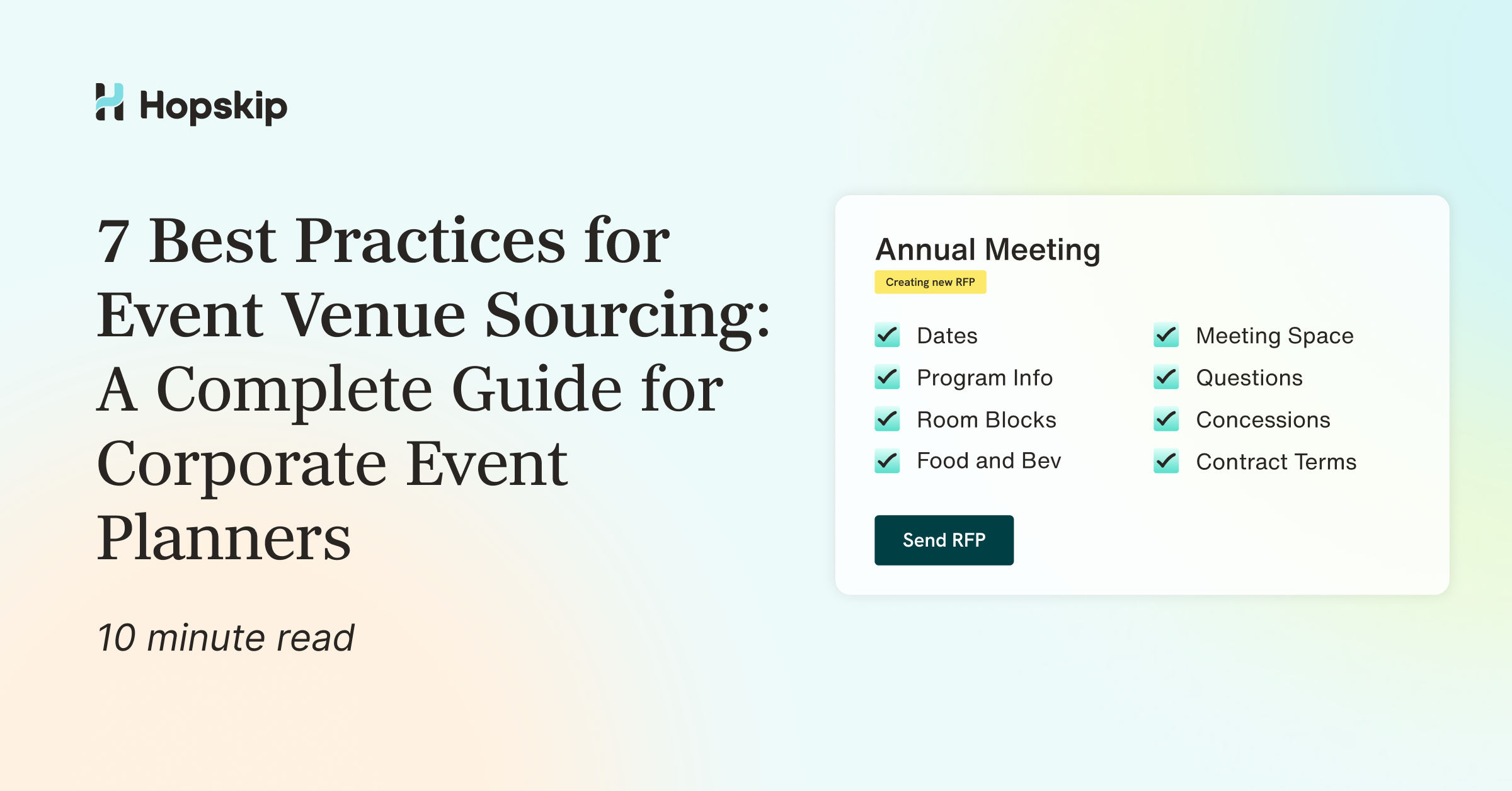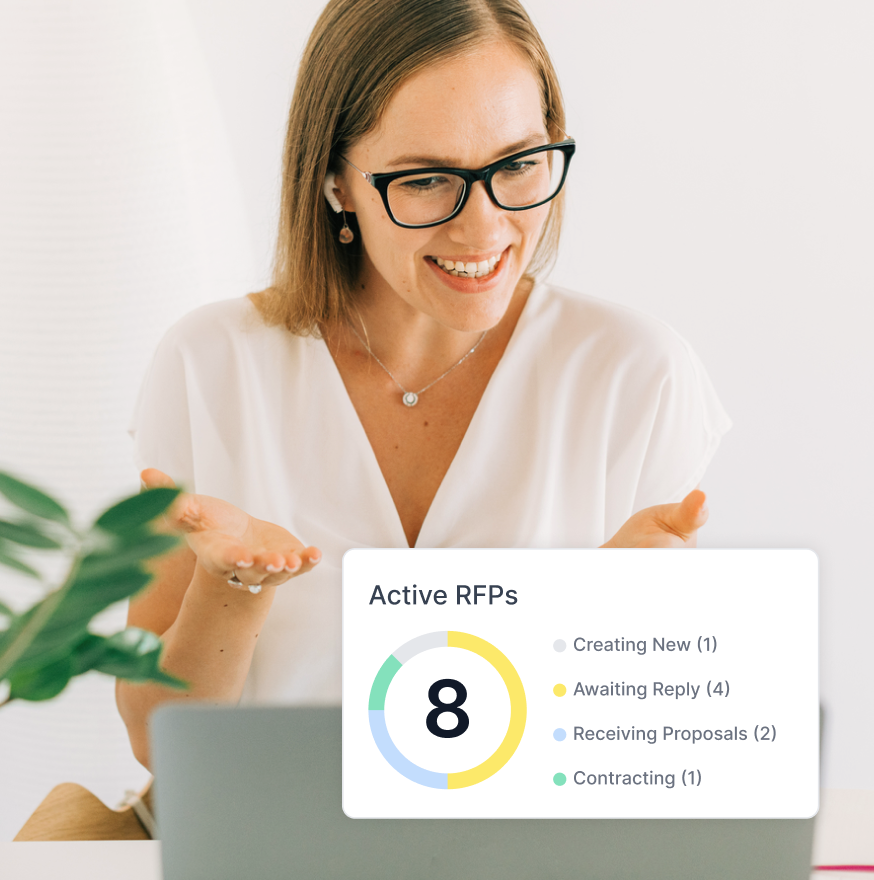Data and Analytics
Data-Driven Event Planning: How to Use Insights Beyond Venue Sourcing
Kate Robertson
Oct 15, 2025
If there’s one thing event planners have always relied on, it’s instincts — the ability to read a room, anticipate a client’s needs, and know when to cue the music. But in 2025, instinct isn’t enough on its own. The best planners today blend their creativity with something just as powerful: data.
From attendee behavior to venue performance, data has become the secret ingredient behind events that wow guests and deliver measurable results. And for planners juggling hundreds of decisions a week, it’s also the key to planning smarter, faster, and more confidently.
Let’s explore how data is reshaping modern event planning — and how planners can use it to create experiences that are not just memorable, but measurable.
1. Why Data Matters More Than Ever
Once upon a time, data in events meant a post-show attendance report or a few survey results. Now? It’s everywhere — and it’s real-time.
- Registration trends show you which sessions will be standing room only.
- Venue response times reveal who’s easy to work with (and who’s not).
- Spend tracking helps you prove ROI to even the toughest CFO.
- Dietary restriction patterns help you order the right catering ratios (because running out of vegan options is a PR crisis waiting to happen).
- Check-in timing data tells you exactly when to staff registration tables at peak capacity.
According to a recent EventMB study, 73% of event planners say data is now critical to their strategy — not just for reporting, but for decision-making at every stage.
In other words: data isn’t just helping you justify your choices after an event. It’s helping you make better ones before it even starts.
2. Turning Chaos Into Clarity: The Planner’s Daily Data Dilemma
Let’s be real — event planners aren’t short on data. You’ve got spreadsheets from venues, CRM exports from marketing, survey responses, badge scan reports, catering headcounts, and maybe a few too many sticky notes.
The challenge isn’t collecting data — it’s connecting it.
Here’s a familiar scenario:
You’re planning a multi-day conference, and your venue sourcing spreadsheet says one thing while your CRM notes say another. Meanwhile, your registration platform is showing a surge in sign-ups, but you’re not sure if your F&B order reflects that. You’re trying to spot patterns, which venues are quoting faster, which session topics drive the most registrations, who’s offering better concessions, which cities consistently underperform, but nothing lines up.
That’s where centralized, data-driven event planning tools (like Hopskip 😉) come in. When your venue data, communication history, attendee insights, and performance metrics live in one place, patterns emerge — and those patterns drive better decisions.
3. Data-Driven Decisions: From Guesswork to Confidence
Data turns planning from a guessing game into a strategic advantage.
Imagine being able to:
- Identify which venues historically respond fastest to RFPs — so you can cut your sourcing time in half.
- Track cost-per-attendee year over year to demonstrate efficiency improvements.
- See which types of events generate the highest attendee satisfaction scores.
- Analyze past no-show rates by event type to avoid over-catering (or worse, under-ordering).
- Compare engagement metrics across different session formats — panel vs. workshop vs. keynote — so you know what your audience actually wants.
- Monitor sponsorship activation data to show partners exactly how many impressions their logo got (hello, renewal conversations!).
This is what we mean by data-driven event planning — using information you already have to predict what’s likely to succeed next time.
And here’s the best part: it doesn’t replace creativity. It amplifies it.
Knowing which ideas are working gives you the freedom to innovate without the fear of “what if it flops?”
4. Real-World Wins: How Planners Are Leveraging Data
Let’s talk about how event professionals are actually using data right now.
- At IMEX 2025, organizers used real-time attendee heat maps to monitor booth traffic and adjust floor flow on the fly. It improved engagement rates by 22%.
- Corporate planners are using engagement data from apps like Cvent Attendee Hub to understand session popularity and tailor future agendas.
- Hospitality teams are reviewing sourcing response data to identify which leads convert fastest — then prioritizing follow-up accordingly.
- Association planners are tracking networking event attendance patterns to determine optimal timing (turns out, Tuesday evening receptions outperform Monday by 40%, who knew?).
- Smart caterers are using consumption data from past events to nail portion sizes, reducing food waste by up to 30% while keeping guests happily fed.
- Event marketers are A/B testing email subject lines and tracking open rates to optimize registration campaigns in real time.
Even small teams are tapping into simple analytics, like tracking response rates from venue outreach or monitoring which promotional channels drive the most ticket sales — to decide which destinations and strategies deliver the best ROI for their effort.
Data doesn’t need to be complicated to be useful. Sometimes, it’s as simple as noticing:
“Every time we plan a regional meeting in Austin, we fill up faster and spend less per attendee. And when we send the save-the-date on a Tuesday morning, registration spikes 25% higher than Friday afternoon sends.”
That’s insight you can act on.
5. Data That Drives Collaboration — Not Confusion
Event planning is a team sport. Data helps everyone — planners, venues, sponsors, and stakeholders — stay on the same page.
- For planners: It’s a single source of truth. No more hunting through emails to find last year’s contract, attendee feedback, or notes on preferred AV setups.
- For venues: It’s clarity on client expectations, timelines, and performance feedback.
- For leadership: It’s visibility into spend, ROI, and pipeline — without planners having to build endless reports.
- For sponsors: It’s proof of value through booth traffic analytics, lead capture metrics, and brand visibility reports.
- For attendees: It’s personalized agendas based on their interests and networking recommendations powered by registration data.
When data flows seamlessly between all parties, planning stops feeling like herding cats and starts feeling like orchestrating a symphony.
6. Beyond Sourcing: Data Wins Across the Event Lifecycle
While venue sourcing gets a lot of attention (and rightfully so — it’s a data goldmine!), smart planners are applying insights throughout the entire event journey:
Pre-Event:
- Use historical registration data to forecast attendance more accurately
- Analyze past survey responses to design agendas that match attendee preferences
- Track early-bird vs. regular ticket conversion rates to optimize pricing strategy
During Event:
- Monitor session check-ins to identify rooms that need overflow seating
- Track app engagement to see which features attendees actually use
- Review real-time feedback polls to make on-the-fly adjustments
Post-Event:
- Compare budget vs. actual spend by category to refine future estimates
- Analyze NPS scores alongside specific feedback to pinpoint what drives satisfaction
- Measure social media sentiment and reach to quantify brand impact
The key? Start small. Pick one metric that matters to your next event and track it obsessively. Then add another. Before you know it, you’re fluent in event data, and your events show it.
7. Balancing Data With the Human Touch
Here’s the thing — data should guide, not dictate.
Numbers can tell you what’s working, but people tell you why. A post-event NPS score might flag that satisfaction dipped, but your on-site staff notes might reveal the real reason: the registration line was too long. Or that session attendance numbers look great on paper, but the real magic happened in the hallway conversations between sessions.
Data empowers planners to make decisions faster, but your relationships, instincts, and storytelling are still what make events unforgettable. The magic happens when you combine both.
Think of it this way:
- Data gives you direction.
- Creativity gives you connection.
- Together, they give you legendary events.
8. The Future of Event Data: Smarter Tools, Better Outcomes
As event tech evolves, the possibilities for event insights are expanding fast. AI-driven analytics are already helping planners predict attendance, optimize budgets, flag potential logistical bottlenecks before they happen, and even suggest personalized session recommendations for attendees.
Imagine a world where your event platform automatically alerts you that based on registration trends, you’ll need 15% more seating in the breakout room. Or where it flags that your email open rates are dropping and suggests testing a new send time. That world? It’s already here.
At Hopskip, we see firsthand how data can transform the planner experience — from sourcing faster to negotiating smarter to planning more confidently across every touchpoint. Our goal isn’t to drown planners in dashboards, but to surface the right insights at the right time, so you can make confident calls without slowing down.
Data doesn’t replace your expertise. It powers it.
9. Bringing It All Together
Modern event planning runs on insights. Whether you’re tracking lead conversions, venue responsiveness, attendee engagement, catering accuracy, or sponsorship ROI, every data point tells a story. The planners who thrive are the ones who learn to listen — and use that story to plan better next time.
So as you plan your next event, ask yourself:
- What data am I already sitting on?
- What insights could make this event smoother, smarter, or more profitable?
- And how can I make data work for me — not the other way around?
- Which single metric, if improved, would have the biggest impact on my event success?
At Hopskip, we believe data should empower creativity, not stifle it. With the right tools and insights, planners can focus less on chasing details and more on crafting unforgettable experiences.
Ready to Plan Smarter?
You don’t need to be a data scientist to plan like one. Start with the insights you already have — and let platforms like Hopskip help you turn them into action with streamlined venue sourcing and group bookings.
After all, the best events aren’t just well-run — they’re well-informed.




